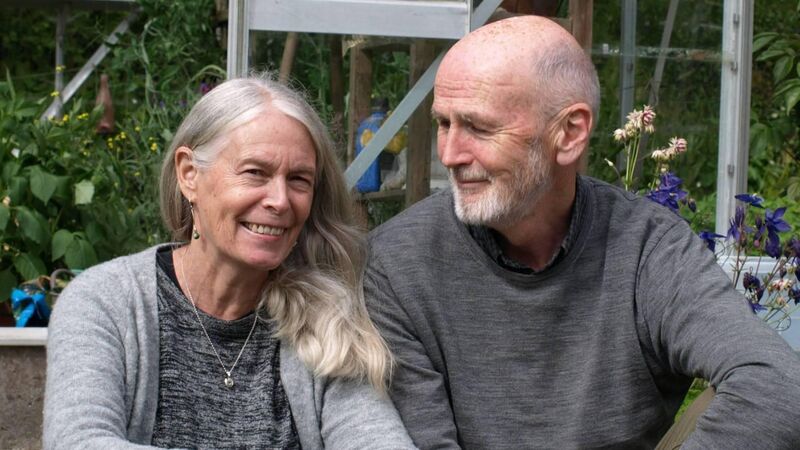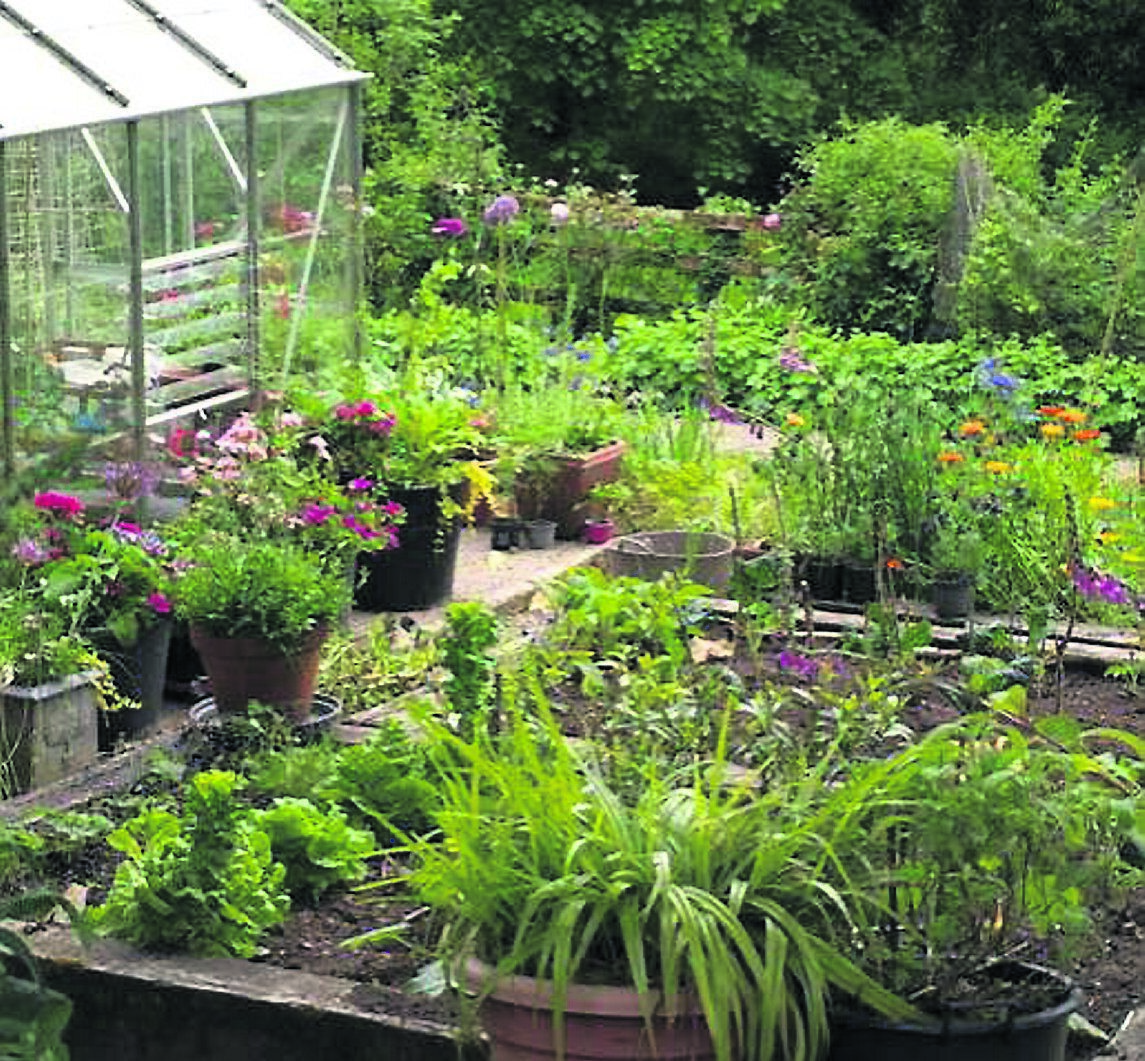Book Review: Counting the cost of going green with the installation of wind-turbines

Niall Williams and Christine Breen Pic credit: Deirdre Kinney-Brendan
- In Kiltumper: A Year In An Irish Garden
- Niall Williams & Christine Breen
- Bloomsbury. €17.99
‘The future will be much less green for going green’, writes Niall Williams, a novelist whose non-fiction Kiltumper titles now compose a quintet. As many readers will know, Williams and his wife Christine Breen, also an author, left New York thirty-five years ago to settle in the Kiltumper townland in Co Clare, home to Christine’s grandfather and to a number of grandfathers before that.
The plan was to work the plot of land around the homestead and to write; which, with raising two children, is exactly what they did. The division of labour may have been somewhat lopsided, but essentially with the creation of the garden which is the centrepiece of this book, their purpose has been achieved. More to the point, it endures.
This was not a case of Adam delving and Eve spinning, although Williams admits that, much like Seamus Heaney, he dug with his pen.
Every now and again through these pages of mild accomplishment such as the delight of a meal formed entirely from the products of the garden Williams subsides and Breen comes in not only with the salad bowl but also with the reminder that spinning involves weeding and feeding and watering and tying up and tying down and cutting back and replanting and a creativity both laborious and rewarding.
In a process endearing to the very spirit of any reader committed to a garden, the small Kiltumper acreage is detailed with a sense of wonder and of pleasure, although predominantly it is Breen who realigns the wonder to what might be called the work ethic.
She also evokes its presences, and chapter after chapter is enhanced with exquisite pencil drawings (or maybe ink, the lines are so thin, sometimes merely a suggestion of a shape continued beyond its context.).
Looking back over a significant year, Williams believes that tending and nourishing and growing of the garden ‘ has come to seem the central part of our lives.’ Looking forward, he has ‘a heightened awareness’ that this may be coming to an end.
It’s not just their age: both in their sixties, their children abroad, a threatening bout of cancer. Such serpents lurk in any Eden. In this one however, the duplicitous creature is green energy in the shape of wind turbines, to be sited on a hill 500 metres away from their home. This brings a heightened awareness of change.
So here begins the argument which shadows so many chapters and which Williams can neither win nor end. For Breen the turbines are an almost psychic injury, her anger sets them at a psychic distance. She turns away from the turbines on the hill and forks out dandelions ‘with my Japanese knife.’ Three lines from Seamus Heaney are quoted at the beginning of this book: ‘The way we are living/ Timorous or bold/ Will have been our life’ (from Elegy) and suggest both an intention and an affirmation for Williams.
No-one who knows his novels can deny his philosophic self-interrogation. Here it sets questions to which he does not know the answers; there seems to be no coherent way in which to balance the losses with the gains. Like most of us (dare one say it?) he desires to save the planet. Will banishing chimneys from new-built housing ensure a less environmentally toxic atmosphere, or will it merely mean that Irish homes no longer have hearths?

Probably more acute in its influence on the year recorded is the placing of the wind-turbines; the official emphasis always seems to be on the beneficent wind rather than on the generating turbines. Can their function and the destruction required for their installation bring sufficient public good to justify their visual impact and the noise pollution they create?
Williams is understandably more subjective than scientific on this issue: his reactions consider landscape, land use, human interaction in government decisions, interference in human and animal habitations. Frequently quotable, always eloquent, he relates his sense of his place to the more abstract concerns of the developers.
He writes that knowing that no actual planner stood in the garden or on the hill of Upper Tumper, or properly ‘regarded’ the location, ‘there is simply a feeling of hurt on behalf of a place that we love.’ Watching as he must the excavations of road, lane and hillside necessary for the turbines’ arrival, he realises an inescapable truth, that green energy is mostly grey, steel and concrete.
He watches the felling of the flourishing fifty-foot high ash tree outside his gate, of many mature trees on the Kiltumper road and any branch that extends over it and even while admitting the skill of the tree-surgeon is stricken by the thought that this surgery is required merely to allow the passage of the blades of the wind turbines.
‘There’s an air of man’s implacable will , and yes, violence, about it…and a constant snow of sawdust flying out over the road and into the garden.’
Then come the widening of the road itself, the bulldozing of more than a kilometre of its stone walls because, over a single day, the turbines themselves will be moved to the hill. The whole process seems to take on a kind of agricultural savagery.
Face to face with the small actualities of greening, of the price to be paid in all the resolutions passed in the attempt to halt our climatic catastrophe and of his alliance with so many people and movements determined to force these changes, Williams is at a loss, almost at a crisis.
How to manage, within himself and without compromising his own ecological integrity, his physical involvement in an intervention in a ‘situation too perilous for anyone to feel complacency, and I don’t.’
Ministerial announcements of government support for more wind farms and other green energy projects, delivered with a ‘virtuous air’, prompt the question of where they are all to go and Williams’ supposition is that they will go to the empty places of the Irish landscape.
In the turning of the turbines he feels the countryside steadily turning, ‘away from the times we have known.’ The times he and Christine Breen have known are shared with their readers without the melancholy perhaps suggested here. T
his is a book full of joy, warmly rich with accomplishment and wonder and a strong sense of mutual commitment. And of Kiltumper itself. In summer, when the sun doesn’t go down until very late in the evenings of a heat-wave there is a sense of living in light. ‘And for sunlit moments then I am a man in his sixties inside his garden talking to the air.’




